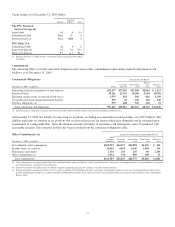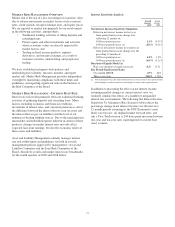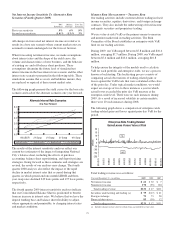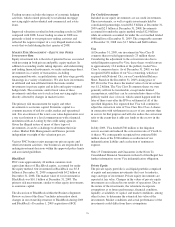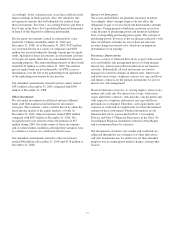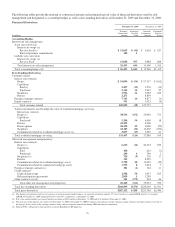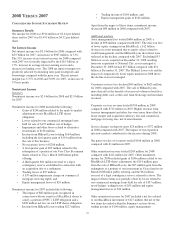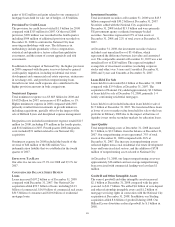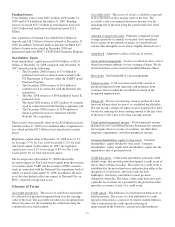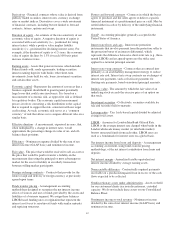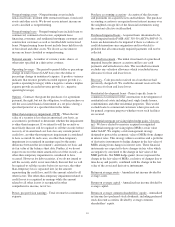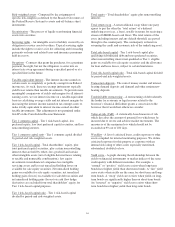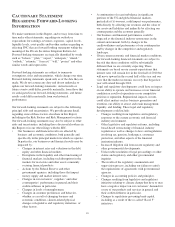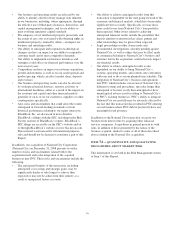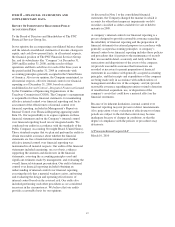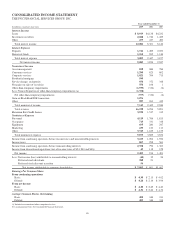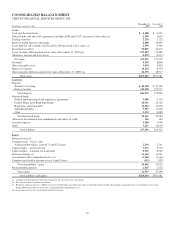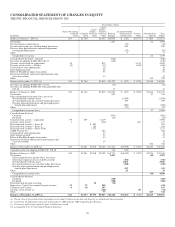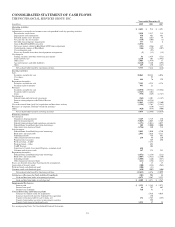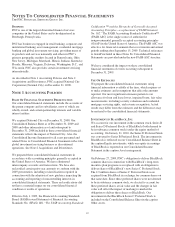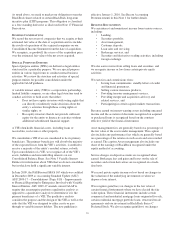PNC Bank 2009 Annual Report Download - page 87
Download and view the complete annual report
Please find page 87 of the 2009 PNC Bank annual report below. You can navigate through the pages in the report by either clicking on the pages listed below, or by using the keyword search tool below to find specific information within the annual report.
Nonperforming assets - Nonperforming assets include
nonaccrual loans, troubled debt restructured loans, foreclosed
assets and other assets. We do not accrue interest income on
assets classified as nonperforming.
Nonperforming loans - Nonperforming loans include loans to
commercial, commercial real estate, equipment lease
financing, consumer, and residential mortgage customers and
construction customers as well as troubled debt restructured
loans. Nonperforming loans do not include loans held for sale
or foreclosed and other assets. We do not accrue interest
income on loans classified as nonperforming.
Notional amount - A number of currency units, shares, or
other units specified in a derivatives contract.
Operating leverage - The period to period dollar or percentage
change in total revenue (GAAP basis) less the dollar or
percentage change in noninterest expense. A positive variance
indicates that revenue growth exceeded expense growth (i.e.,
positive operating leverage) while a negative variance implies
expense growth exceeded revenue growth (i.e., negative
operating leverage).
Options - Contracts that grant the purchaser, for a premium
payment, the right, but not the obligation, to either purchase or
sell the associated financial instrument at a set price during a
specified period or at a specified date in the future.
Other-than-temporary impairment (OTTI) - When the fair
value of a security is less than its amortized cost basis, an
assessment is performed to determine whether the impairment
is other-than-temporary. If we intend to sell the security or
more likely than not will be required to sell the security before
recovery of its amortized cost basis less any current-period
credit loss, an other-than-temporary impairment is considered
to have occurred. In such cases, an other-than-temporary
impairment is recognized in earnings equal to the entire
difference between the investment’s amortized cost basis and
its fair value at the balance sheet date. Further, if we do not
expect to recover the entire amortized cost of the security, an
other-than-temporary impairment is considered to have
occurred. However for debt securities, if we do not intend to
sell the security and it is not more likely than not that we will
be required to sell the security before its recovery, the other-
than-temporary loss is separated into (a) the amount
representing the credit loss, and (b) the amount related to all
other factors. The other-than-temporary impairment related to
credit losses is recognized in earnings while the amount
related to all other factors is recognized in other
comprehensive income, net of tax.
Pretax, pre-provision earnings - Total revenue less noninterest
expense.
Purchase accounting accretion - Accretion of the discounts
and premiums on acquired assets and liabilities. The purchase
accounting accretion is recognized in net interest income over
the weighted average life of the financial instruments using
the constant effective yield method.
Purchased impaired loans - Acquired loans determined to be
credit impaired under FASB ASC 310-30 (AICPA SOP 03-3).
Loans are determined to be impaired if there is evidence of
credit deterioration since origination and for which it is
probable that all contractually required payments will not be
collected.
Recorded investment - The initial investment of a purchased
impaired loan plus interest accretion and less any cash
payments and writedowns to date. The recorded investment
excludes any valuation allowance which is included in our
allowance for loan and lease losses.
Recovery - Cash proceeds received on a loan that we had
previously charged off. We credit the amount received to the
allowance for loan and lease losses.
Residential development loans - Project-specific loans to
commercial customers for the construction or development of
residential real estate including land, single family homes,
condominiums and other residential properties. This would
exclude loans to commercial customers where proceeds are
for general corporate purposes whether or not such facilities
are secured.
Residential mortgage servicing rights hedge gains / (losses),
net - We have elected to measure acquired or originated
residential mortgage servicing rights (MSRs) at fair value
under GAAP. We employ a risk management strategy
designed to protect the economic value of MSRs from changes
in interest rates. This strategy utilizes securities and a portfolio
of derivative instruments to hedge changes in the fair value of
MSRs arising from changes in interest rates. These financial
instruments are expected to have changes in fair value which
are negatively correlated to the change in fair value of the
MSR portfolio. Net MSR hedge gains/ (losses) represent the
change in the fair value of MSRs, exclusive of changes due to
time decay and payoffs, combined with the change in the fair
value of the associated derivative instruments.
Return on average assets - Annualized net income divided by
average assets.
Return on average capital - Annualized net income divided by
average capital.
Return on average common shareholders’ equity - Annualized
net income less preferred stock dividends, including preferred
stock discount accretion, divided by average common
shareholders’ equity.
83


